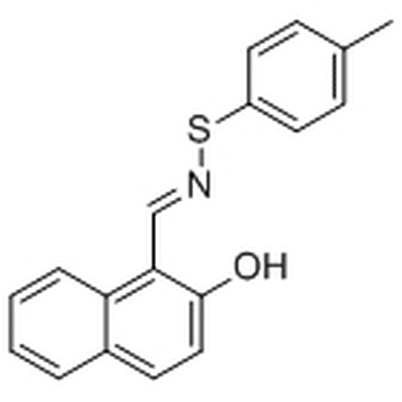Is RBN2397 a new product?
Leave a message
Hey there! As a supplier of RBN2397, I often get asked if it's a new product. Well, let's dive right into this topic and figure it out together.
First off, let's talk a bit about what RBN2397 is. RBN2397 is a compound that has been making waves in the scientific community. It's involved in some pretty interesting research areas, especially when it comes to cell - cycle and DNA - damage studies. You know, understanding how cells grow, divide, and repair themselves is crucial in many fields, like cancer research and drug development.
Now, to answer the question of whether RBN2397 is a new product. In the grand scheme of things, it's relatively new. The scientific world is constantly evolving, and new compounds are being discovered and studied all the time. RBN2397 has emerged in recent years, and its potential applications are still being explored.
When we look at the market for such compounds, there are a lot of other players out there. For example, FGFR - IN - 11 CAS No.: 2658488 - 68 - 5 is another compound that's used in similar research areas. It's been around for a while, and researchers have a good understanding of its properties and effects. Then there's AZD5305 CAS No.:2589531 - 76 - 8, which also has its own set of unique characteristics. And FX - 909(FX 909;FX909)CAS No.: 2924573 - 90 - 8 is yet another one that researchers might choose depending on their specific needs.
But what makes RBN2397 stand out? Well, one of the things that makes it exciting is its potential to target specific pathways in cells. In cancer research, for example, being able to target specific molecules or pathways can lead to more effective treatments. RBN2397 seems to have some unique properties that allow it to interact with certain proteins and enzymes in a way that could be beneficial for treating diseases.
However, being a new product also comes with its challenges. There's still a lot we don't know about RBN2397. More research is needed to fully understand its long - term effects, potential side - effects, and the best ways to use it. But that's also part of the excitement. Scientists are constantly conducting experiments to learn more about this compound, and every new discovery brings us closer to unlocking its full potential.
In terms of the supply side, as a supplier, I've seen the demand for RBN2397 grow over the past few years. More and more research institutions and pharmaceutical companies are showing interest in it. This is a good sign that the scientific community is starting to recognize its value.
When it comes to the production of RBN2397, it's a complex process. We have to ensure that the compound is synthesized with high purity and quality. Any impurities can affect the results of experiments and potentially lead to inaccurate data. That's why we have strict quality control measures in place to make sure that every batch of RBN2397 we supply meets the highest standards.
Another aspect to consider is the cost. New products often come with a higher price tag, and RBN2397 is no exception. The research and development costs, as well as the cost of production, are factored into the price. But as more research is done and the production process becomes more efficient, we can expect the price to become more competitive over time.
So, is RBN2397 a new product? Yes, it is. But it's also a product with a lot of promise. It has the potential to make significant contributions to the scientific community, especially in the fields of cell - cycle and DNA - damage research.
If you're involved in research related to cell - cycle and DNA - damage, or if you're a pharmaceutical company looking for new compounds to explore, I encourage you to consider RBN2397. We're here to support you with high - quality RBN2397 supplies. Whether you need a small sample for initial experiments or a large quantity for a full - scale study, we can work with you. If you're interested in learning more or starting a procurement discussion, don't hesitate to reach out. We're always happy to talk about how RBN2397 can fit into your research or development projects.


References
- Scientific journals on cell - cycle and DNA - damage research
- Industry reports on new compounds in the market





